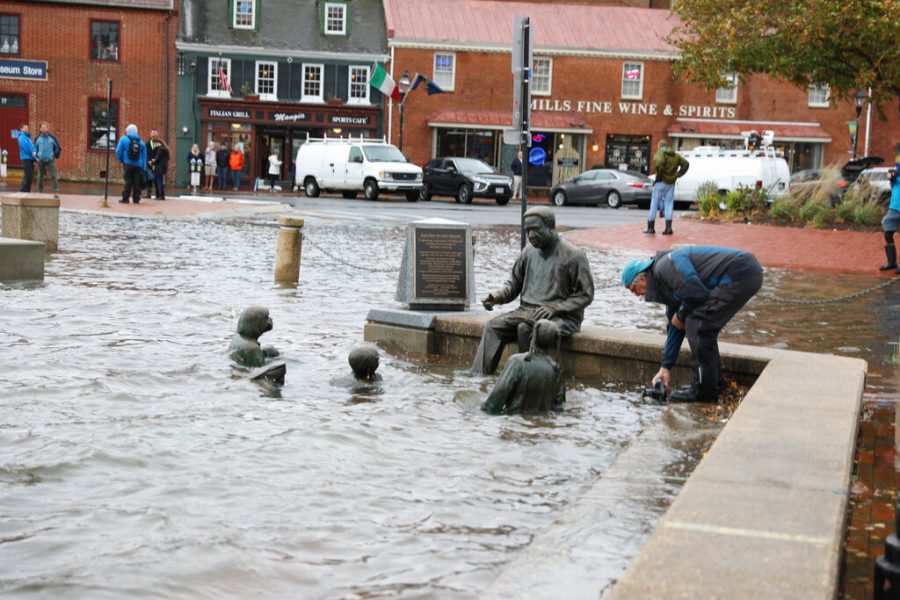Maryland is sinking
The Kunta Kinte-Alex Haley Memorial and the road behind it are flooded near high tide at City Dock in downtown Annapolis, Md., on Friday, Oct. 29, 2021. The National Weather Service is warning that the mid-Atlantic region could see one of the biggest tidal floods of the last decade or two as heavy rain and winds pummel the region on Friday. (AP Photo/Brian Witte)
On Saturday, Oct. 30, residents of Baltimore, Maryland rushed to safety as the Chesapeake Bay washed over their front yards. The tidal flood lasted nearly the entire day, starting early in the afternoon and resulting in over four feet of water.
The rapidly rising sea levels are the main cause of tidal flooding, and experts believe that the deadly events in Baltimore were the result of climate change.
“Long-term sea level rise from increasing global and ocean temperatures resulting from climate change makes coastal flooding events like this happen more frequently, with worsening impacts from higher floods,” Brandon Miller, CNN meteorologist, said.
The disaster was one of the worst tidal flooding events to happen in the last 20 years, causing Maryland governor Larry Hogan to declare a state of emergency on Friday, Oct. 29. The following day in Harford County, Maryland, over 2,000 families experienced power outages.
“Even if you are accustomed to flooding, this is much more serious and has the potential to be extremely damaging over the course of the next 24 hours,” Hogan said.
Due to the flood’s dangerous impact, schools shut down for the safety of both students and staff. Local businesses closed temporarily because of water damage and will not open their doors again until renovations have been completed.
“I really hope the people who were affected by the flood in Maryland are safe. It is crazy how natural disasters can cause this much destruction, and I hope it does not happen again,” Marisa Behan, junior, said.
While the Maryland flooding caused a large amount of damage for most residents, the storm was luckily short-lived. Weather cleared up by Nov. 3, and the Chesapeake Bay is already recovering. With the help of volunteers, the state will be back to normal in no time.

Hello! My name is Elizabeth. I am a senior and The Events Coordinator on the Talon, it is my second year in the newspaper. I have an extreme (probably...

